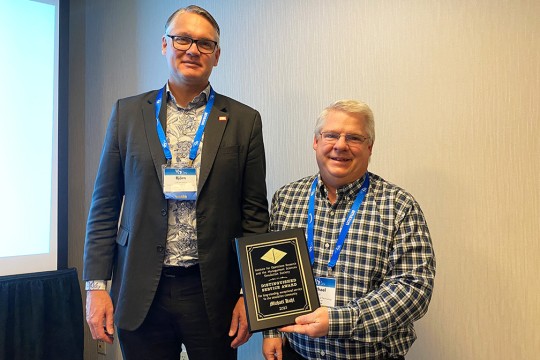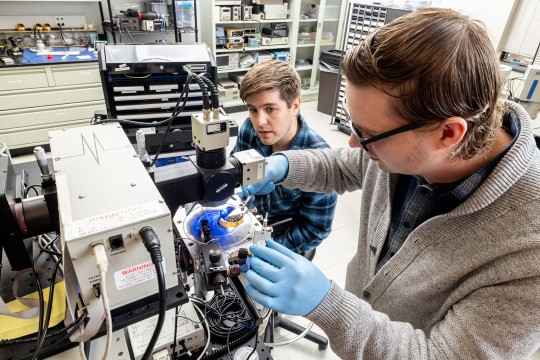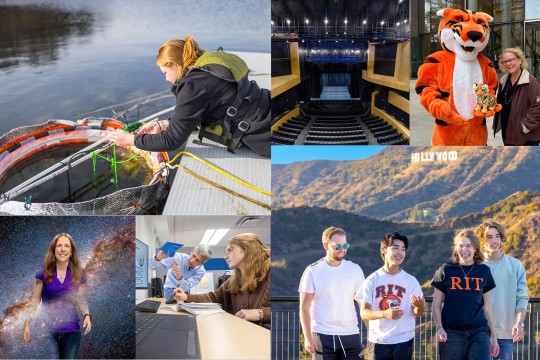RIT faculty member named a KEEN Engineering Unleashed Fellow
Patricia Cyr recognized as part of select group for work on improving engineering education
When she was first told she had been nominated to apply for an Engineering Unleashed Fellowship, Patricia Cyr was surprised.
“I didn’t realize there was a nomination process. When I was contacted over the summer and told I was one of the winners from last year, my first response was, winners of what?” said Cyr, a lecturer in RIT’s Kate Gleason College of Engineering.
As part of a summer faculty development workshop sponsored by the Kern Entrepreneurial Engineering Network (KEEN), Cyr was recommended by workshop leaders for the fellowship because of her work during the program and while teaching at RIT to advance engineering course activities and to improve student learning outcomes. For this work, Cyr was selected as a 2020 Engineering Unleased Fellow, and becomes RIT’s first faculty members to be recognized with the fellowship.
Engineering Unleashed is a national organization made up of more than 160 universities and colleges that focus on graduating engineers with an entrepreneurial mindset. RIT and its Kate Gleason College of Engineering and College of Engineering Technology have been part of the national organization since 2019.
“One of the reasons that I’m so drawn to KEEN is that part of my goal in teaching is to not just teach the students how to deal with data, but what to expect and how to work in industry. For me, it is taking what might be dry material and relating it to something real,” said Cyr, who teaches data analysis, Lean Six Sigma and statistical quality courses for engineers as part of RIT’s industrial and systems engineering department. She began teaching as an adjunct at RIT in 1989, while working full time at Kodak.
As a KEEN Fellow, she will mentor RIT faculty in use of the Problem Solving Studio method in their classes—a strategy to build student capabilities in adaptive problem-solving, teamwork, and interaction. Engineering students will be working with data in new ways because of Cyr’s collaboration with KEEN partners. She will use the financial award given to Fellows to develop infrastructure for Problem Solving Studio methods at RIT.
“I was blown away by the faculty development workshop offered by KEEN and the teaching methods presented,” she said. “I thought this is so useful and it will be good for the students.”
Engineering education is transitioning across the country toward designing products and services that better serve society overall. One trend is the integration of “entrepreneurial-minded learning” into coursework to improve learning outcomes. KEEN and its entrepreneurial mindset is not contrary to how engineering concepts have been taught at universities, but is a progressive way of preparing the next generation of engineers, like those graduating from universities such as RIT, who will be expected to anticipate, and act on, societal changes.
“I always tell my students, no one is going to pay you to solve homework problems,” said Cyr, who has degrees in chemical engineering and statistics, as well as substantial industry experience. “You need to be able to identify what data you need so that you can make decisions. Making data-based decisions is about the whole picture, and I think that is what KEEN and its entrepreneurial thinking is about. It’s about creating engineers who are more aware of the big picture.”
Mentoring and applying concepts
KEEN’s faculty development workshops encourage mentoring models for the classroom to complement lecture and discussion of homework problems. Participants at workshops like the one Cyr participated in share how they adapted a lecture module to be more interactive. Teaching foundational data analysis courses that industrial and biomedical engineers must take, Cyr’s adapted class assignment was about climate change.
“Our students are very environmentally active – that is the hook to get them interested,” she said. Her project had students confirming through data analysis whether the average temperature has risen 1.62 degrees Fahrenheit since the end of 19th century. Using large data sets of the high and low temperatures from Central Park, N. Y., since 1863 through 2018, students had to determine how they would investigate significant temperature changes.
“I am trying to help the students become better in the workplace. I always have an example of where I have used a particular analysis method to solve a real problem,” she explained.
Getting students to see the relationship between data computations and real-world applications involves mixing concepts of binomial probability distribution with situations such as cell phone usage and over-selling seats on airplanes.
“It is about trying to get students more engaged in real-world scenarios. This goes over very well with our students because they go on co-op; they will have the opportunity to see real-world applications,” she added. “When students return saying ‘I used this,’ or they are using these methods for data analysis, it makes a difference. I am trying to help the students become better in the workplace.”






